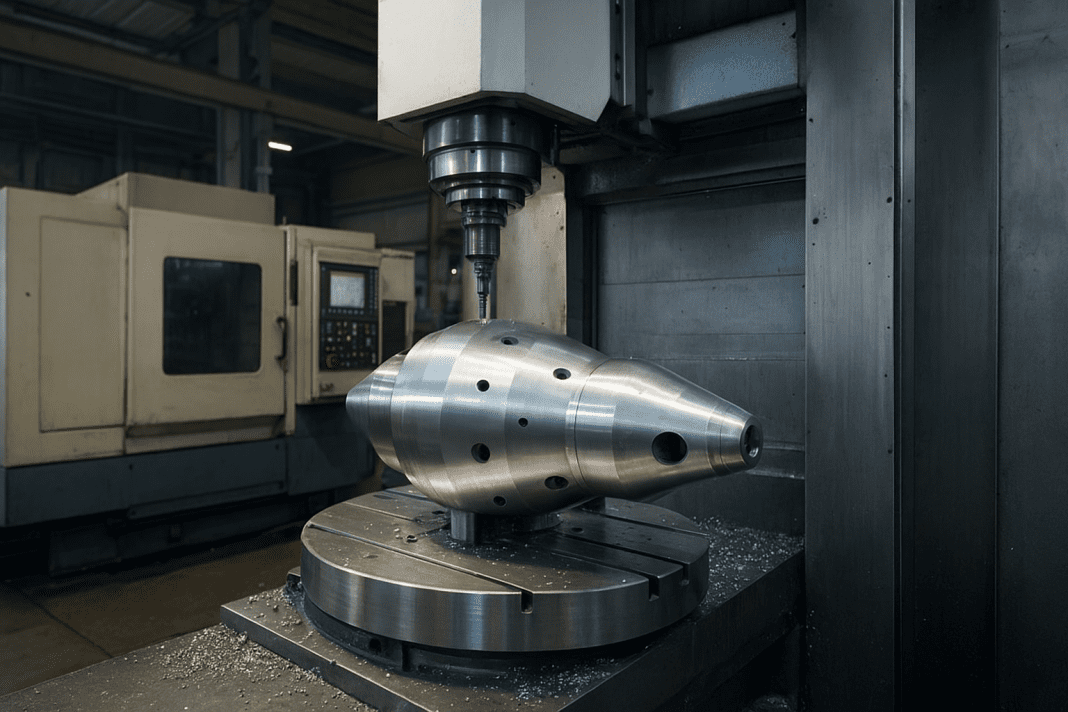Ukraine’s Defense Intelligence (HUR) has revealed a startling discovery about Russia’s ongoing war efforts. According to their latest report, Russian defense factories continue to rely heavily on foreign-made machinery to produce key weapons, including missiles, artillery shells, and advanced bomb modules. The findings suggest that Japan, China, and Taiwan-made equipment is playing a significant role in Russia’s military production.
Foreign Machines Fueling Russian Weaponry, Says Defense Intelligence
The Ukrainian Defense Intelligence agency released a statement on November 14, highlighting that Russian factories are using high-precision machines from abroad. Specifically, the report identified Japanese and Chinese machining centers actively operating in Russian facilities producing universal gliding and correction modules (UMPK) for bombs, as well as other weapon components.
Investigators documented that Russian companies are employing Okuma machining centers from Japan and Hision machines from China. These machines are part of the production lines at the Tactical Missiles Corporation, one of Russia’s major missile manufacturing hubs.
Additionally, the Burevestnik Institute, responsible for producing stabilizers for mortar rounds, is using equipment from Taiwan-based AKIRA SEIKI. The use of these foreign machines enables Russian factories to maintain high precision and speed in weapon manufacturing, despite international sanctions aimed at limiting such capabilities.
OSINT Hackathon Reveals Detailed Findings from Defense Intelligence
The new intelligence comes from a collaborative investigation conducted during an international OSINT (Open-Source Intelligence) hackathon. The event marked the first anniversary of the War&Sanctions investigative platform. Hackathon participants analyzed satellite images, procurement documents, and industrial records to trace the origins of machines inside Russian weapons factories.
The investigation further revealed that after the start of the full-scale invasion, Russia continued to expand its use of foreign technology. The Votkinsk plant, which produces the advanced Iskander missile, received additional machinery from China, including KEDE and WMT systems. Taiwan’s ECOM VL-12i milling centers were also installed to boost production capacity.
The Ukrainian Defense Intelligence agency emphasized that this evidence is now being used to support new sanctions initiatives. Limiting access to foreign industrial equipment could reduce the production capability of Russia’s defense industry and slow the manufacturing of advanced weapons. According to Defense Intelligence, the collected data has already helped shape international policies aimed at curbing Russian military production.
Advanced Drone Strike Highlights Ukrainian Capabilities
In addition to exposing Russian reliance on foreign machinery, Ukraine recently showcased a new level of military innovation. Ukrainian forces carried out a multi-stage covert drone strike on Russian-controlled gas platforms in the Black Sea.
The operation involved long-range submersible drone-torpedoes, each carrying 80-kilogram warheads, coordinated with surface drones. This marked a significant advancement in Ukraine’s use of unmanned naval systems, demonstrating their ability to execute precise attacks on strategic targets.
According to the report, these strikes were carried out without detection and highlighted the growing sophistication of Ukraine’s military technology. The operation also illustrates the country’s determination to counter Russian military advantages through innovative methods and intelligence-driven actions.
This investigation by Ukraine’s Defense Intelligence sheds light on a less visible aspect of the war. While headlines often focus on front-line battles, these findings show that industrial and technological support from other countries—intentionally or not—is playing a key role in sustaining Russian military operations.
The revelations provide concrete evidence that Russia’s weapon production depends on high-tech foreign machinery. Countries like Japan, China, and Taiwan, knowingly or unknowingly, have seen their industrial equipment used to manufacture missiles, artillery, and advanced bomb modules for the ongoing war.
By uncovering the presence of these foreign machines, Ukraine’s Defense Intelligence aims to strengthen the case for international sanctions and pressure. Meanwhile, their innovative use of drones and naval technology highlights the increasing importance of intelligence and technology in modern warfare.

